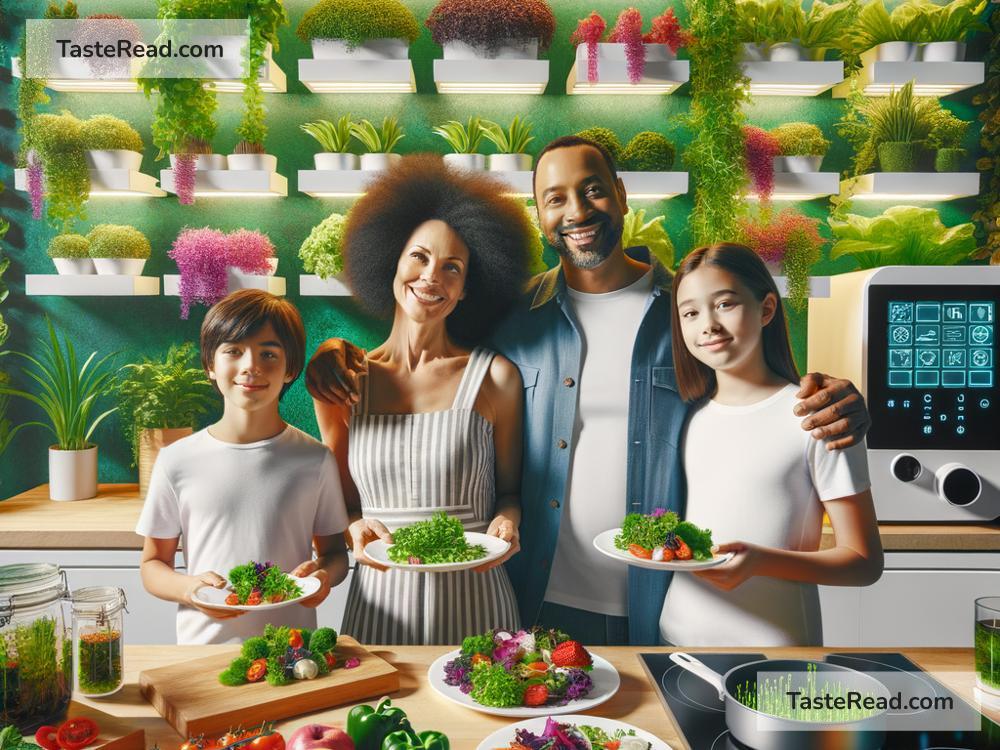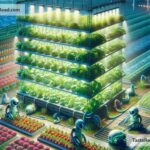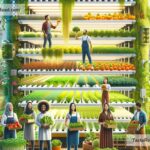The Future of Food and Environmental Health: What Lies Ahead?
Food is essential to life. It fuels our bodies, keeps us healthy, and connects us to the world around us. But have you ever wondered what food will look like in the future? Will we still be eating the same fruits, vegetables, and meals we enjoy today? Alongside those questions, there’s another big one: how will food impact our planet’s health?
The way we grow, produce, and consume food has a huge impact on the environment. With climate change, pollution, deforestation, and population growth, the future of food and environmental health is a hot topic. In this article, we’ll explore what lies ahead for food and the planet — and why 21st-century solutions offer hope.
Growing Challenges in Food and Environmental Health
As the global population rises (expected to reach nearly 10 billion by 2050), feeding everyone becomes a major challenge. Right now, many people around the world suffer from hunger, while others have too much food, leading to waste and overconsumption. At the same time, the methods we use to grow food are affecting the Earth’s health in harmful ways. For example:
-
Deforestation: To grow crops and raise livestock, forests are being cut down, leading to loss of wildlife, plants, and clean air. Forests also absorb carbon dioxide, which helps fight climate change. Losing them worsens environmental health.
-
Climate impact: Modern farming releases greenhouse gases — like methane from cows and carbon dioxide from tractors and machinery — which heat the planet. Hotter temperatures can make growing food harder by causing droughts, floods, and extreme weather.
-
Soil degradation: Many farming practices strip nutrients from the soil, making it less fertile over time. As land becomes less productive, farmers must clear more natural areas to grow crops.
-
Food waste: Globally, about one-third of all food goes to waste, often ending up in landfills where it releases methane. Imagine how much less strain on the planet there would be if wasted food could be prevented!
What Will the Future of Food Look Like?
To meet the challenges above, scientists, farmers, and environmentalists are working together to rethink food production. The goal is to provide enough food for everyone in the world while protecting the planet. Some exciting possibilities are already being explored:
1. Lab-Grown Meat
One of the most revolutionary ideas is lab-grown or “cultured” meat. Instead of raising animals, scientists are growing meat using animal cells in a lab. This method uses far less land and water than traditional cattle farming and produces fewer greenhouse gases. It’s also cruelty-free, making it an ethical choice for people who care about animal welfare. While lab-grown meat isn’t yet widely available, many companies are working to make it affordable for everyday consumers.
2. Plant-Based Alternatives
Vegetarian diets are well-known for being better for the planet. But now, plant-based foods are going mainstream thanks to companies creating products that mimic the taste and texture of meat and dairy. From burgers made of pea protein to oat milk smoothies, plant-based eating is becoming more popular. This trend could greatly reduce the environmental damage caused by livestock farming.
3. Vertical Farming
Traditional farming requires a lot of space, sunlight, and water — resources we may not have enough of in the future. Vertical farming is a creative solution. It uses stacked layers to grow crops indoors, often using LED lights instead of sunlight. Vertical farms can be set up in cities and use less water and pesticides than outdoor farms. This method could revolutionize how fresh produce is grown and delivered.
4. Precision Agriculture
Technology is helping farms become smarter. Tools like drones, sensors, and satellites allow farmers to monitor their crops and soil conditions in real-time. Precision agriculture ensures that every drop of water, every fertilizer application, and every pest-control measure is used as efficiently as possible. This approach saves resources and reduces the environmental harm caused by traditional farming.
5. Alternative Protein Sources
Insects may not sound appetizing to everyone, but they’re packed with protein and require far fewer resources to raise compared to cows or pigs. Eating crickets, mealworms, and other insects is common in some cultures, and it’s gaining attention as a sustainable protein source for the future.
6. Reducing Food Waste
Innovative solutions are cropping up to address food waste. For example, apps help connect stores or restaurants with unsold food to people in need. Improved packaging technology also makes it easier to preserve fresh food for longer, reducing spoilage.
Protecting Environmental Health Along the Way
Producing food sustainably is key to keeping the Earth healthy. But environmental health is affected by more than just agriculture — it’s tied to how we live, travel, and consume overall. Here’s how the future could look brighter for the planet:
-
Renewable energy: Replacing coal and oil with solar, wind, and other clean energy sources means fewer greenhouse gases. Sustainable farming methods rely on clean energy, too.
-
Circular economy: Recycling, reusing, and reducing waste are becoming major goals. For example, farmers can use food waste to create compost that enriches soil instead of throwing it away.
-
Education: More people are learning about how their choices impact the environment. From planting gardens to eating responsibly, individuals can help make a difference.
What Can You Do?
While big changes are needed at a global level, small actions by individuals matter too. You can make eco-friendly choices every day:
– Eat less meat and more plant-based foods.
– Support local farmers and sustainable brands.
– Reduce food waste by planning meals and storing food properly.
– Learn and share knowledge about environmental health.
The future of food and environmental health is full of challenges, but it’s also full of hope. With smarter ideas, creative solutions, and teamwork, we can ensure that future generations will have enough to eat — and a healthy planet to live on.
Together, we can shape a better future for food and the Earth. Let’s get started today!


